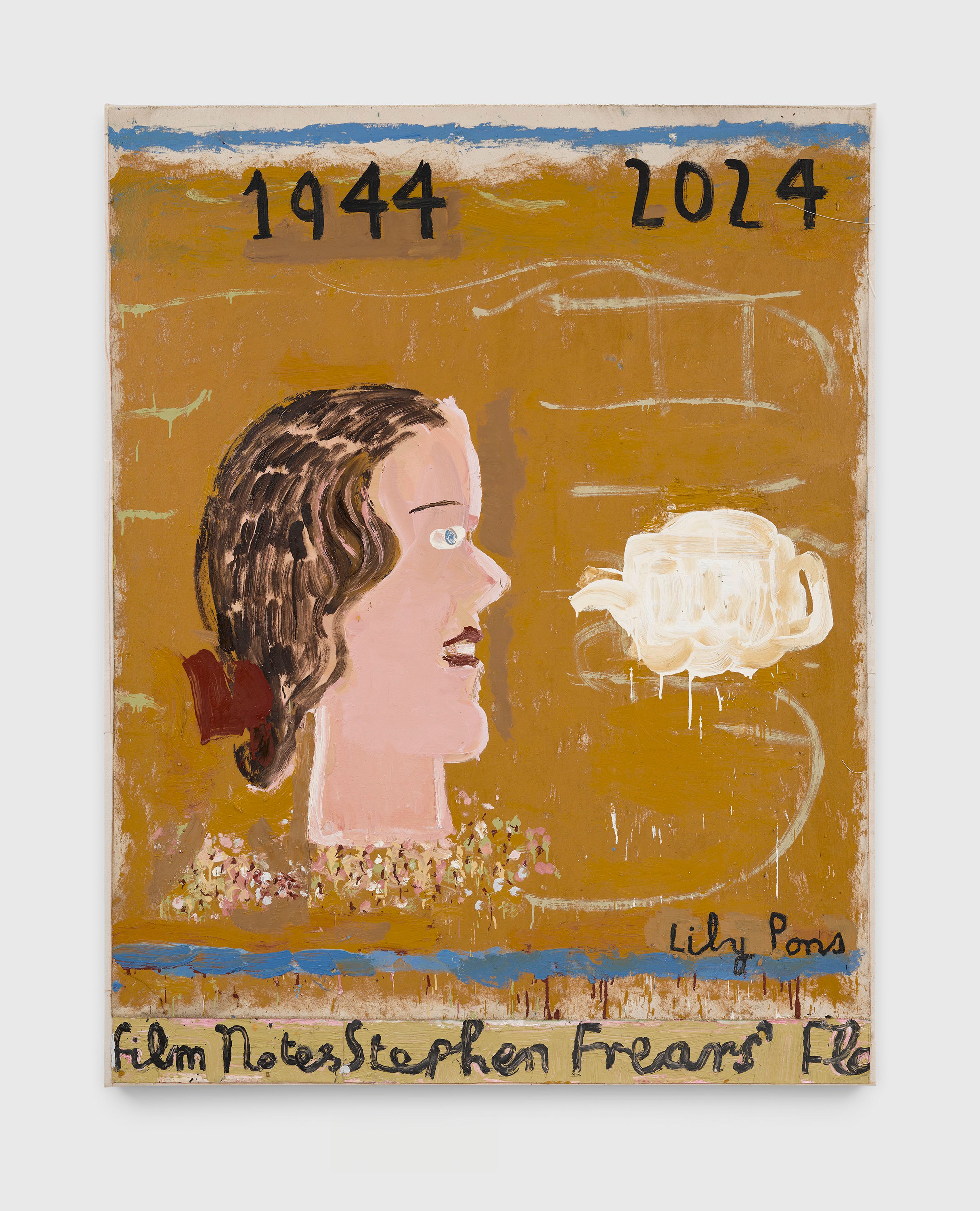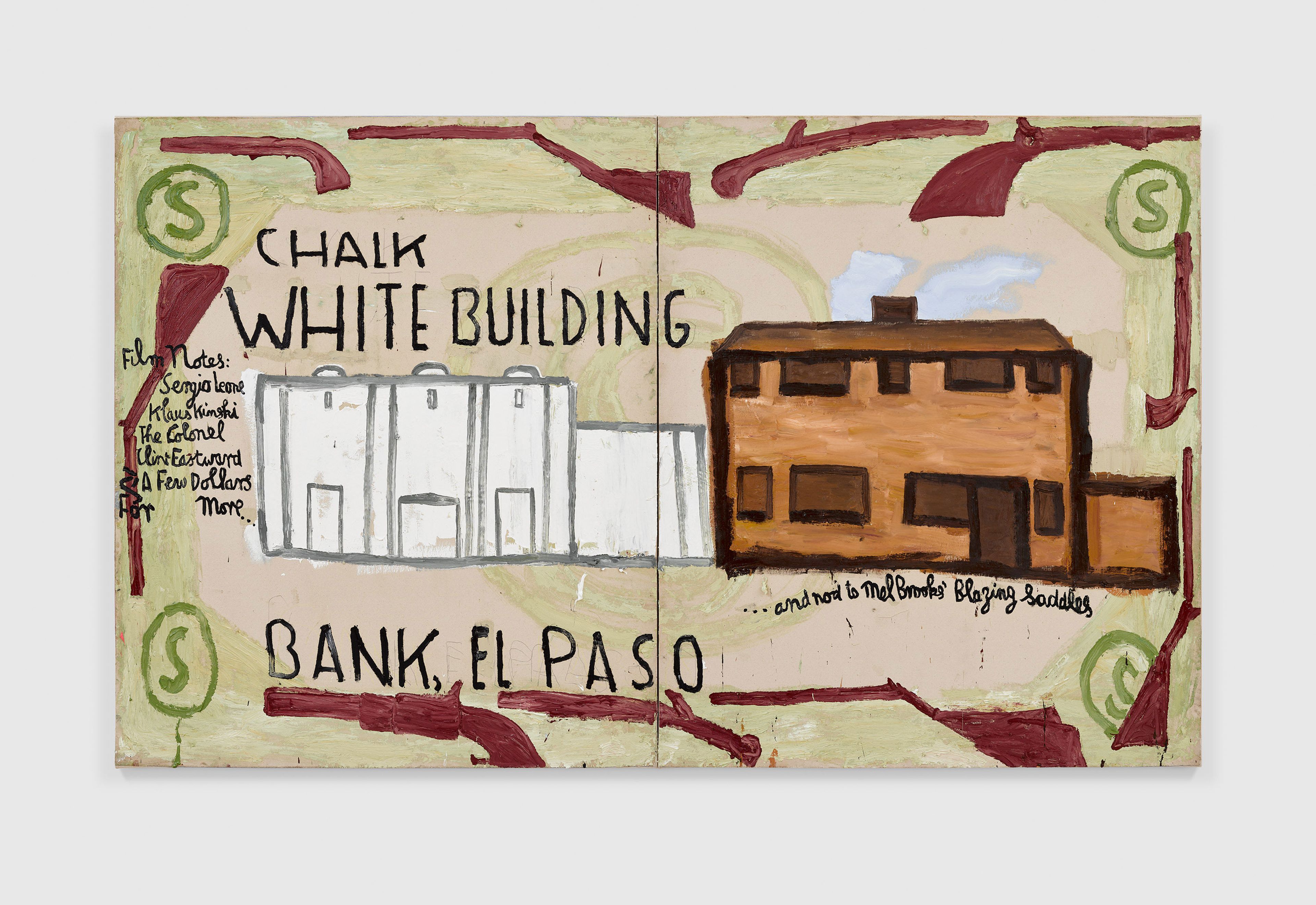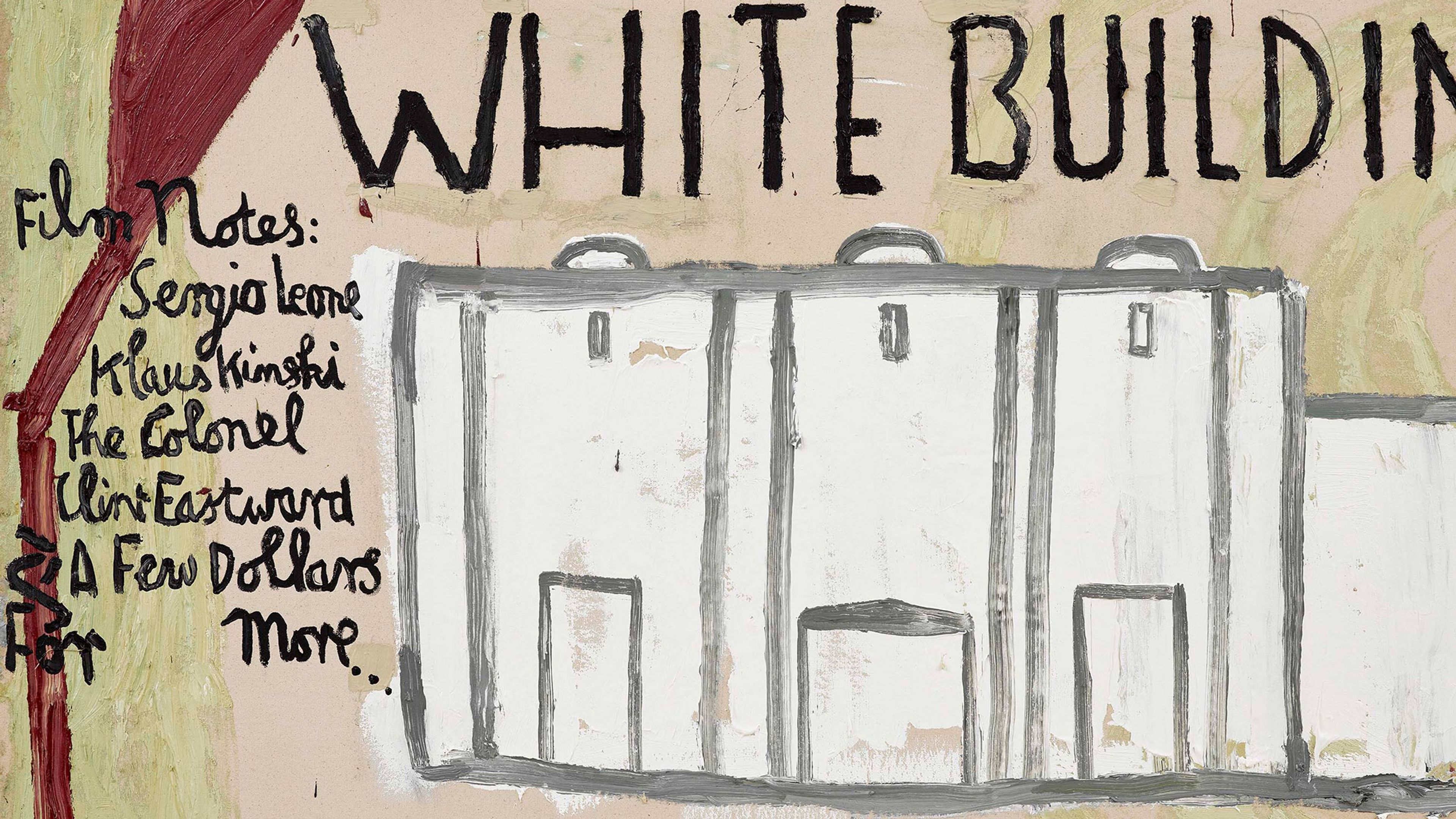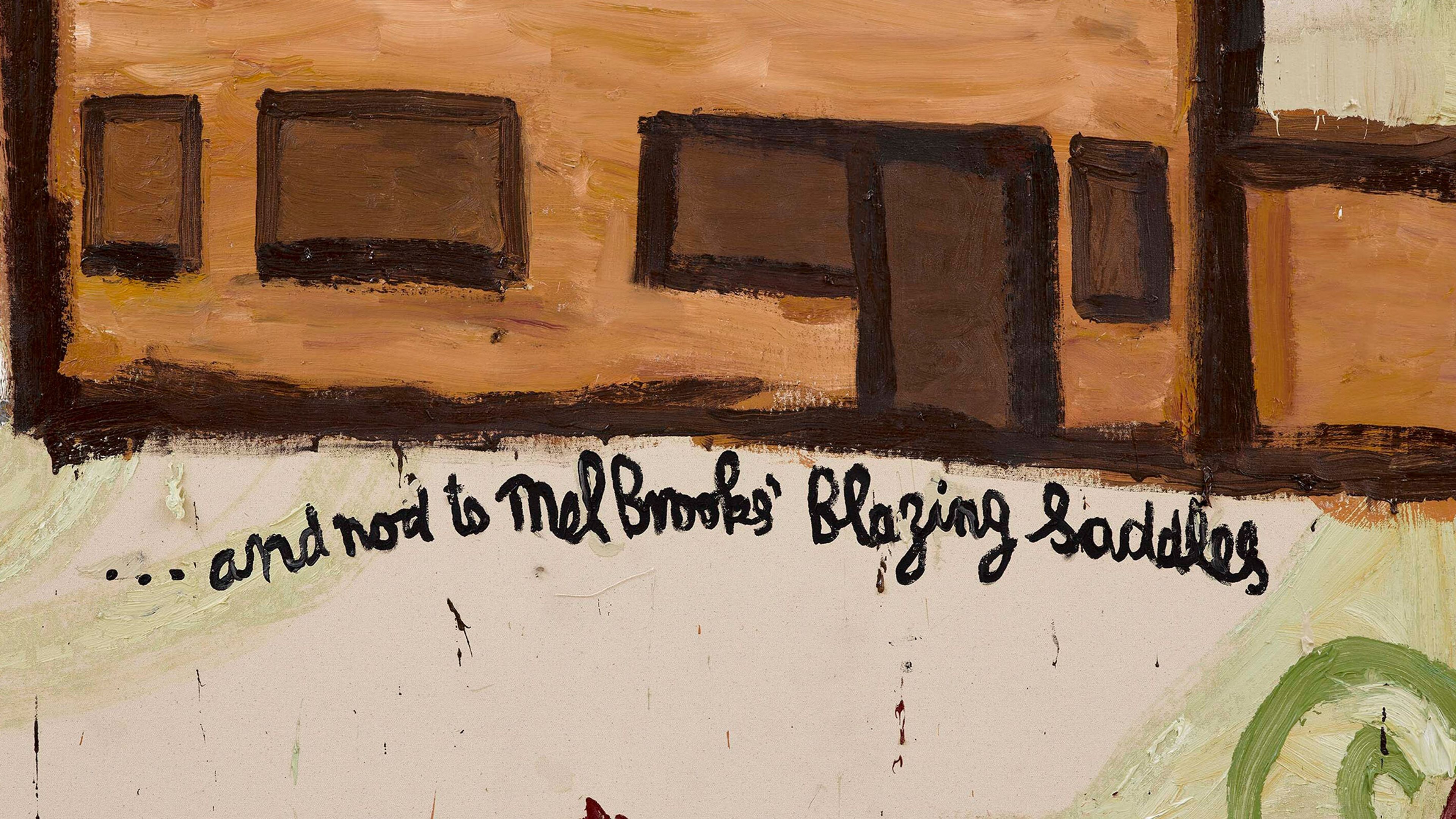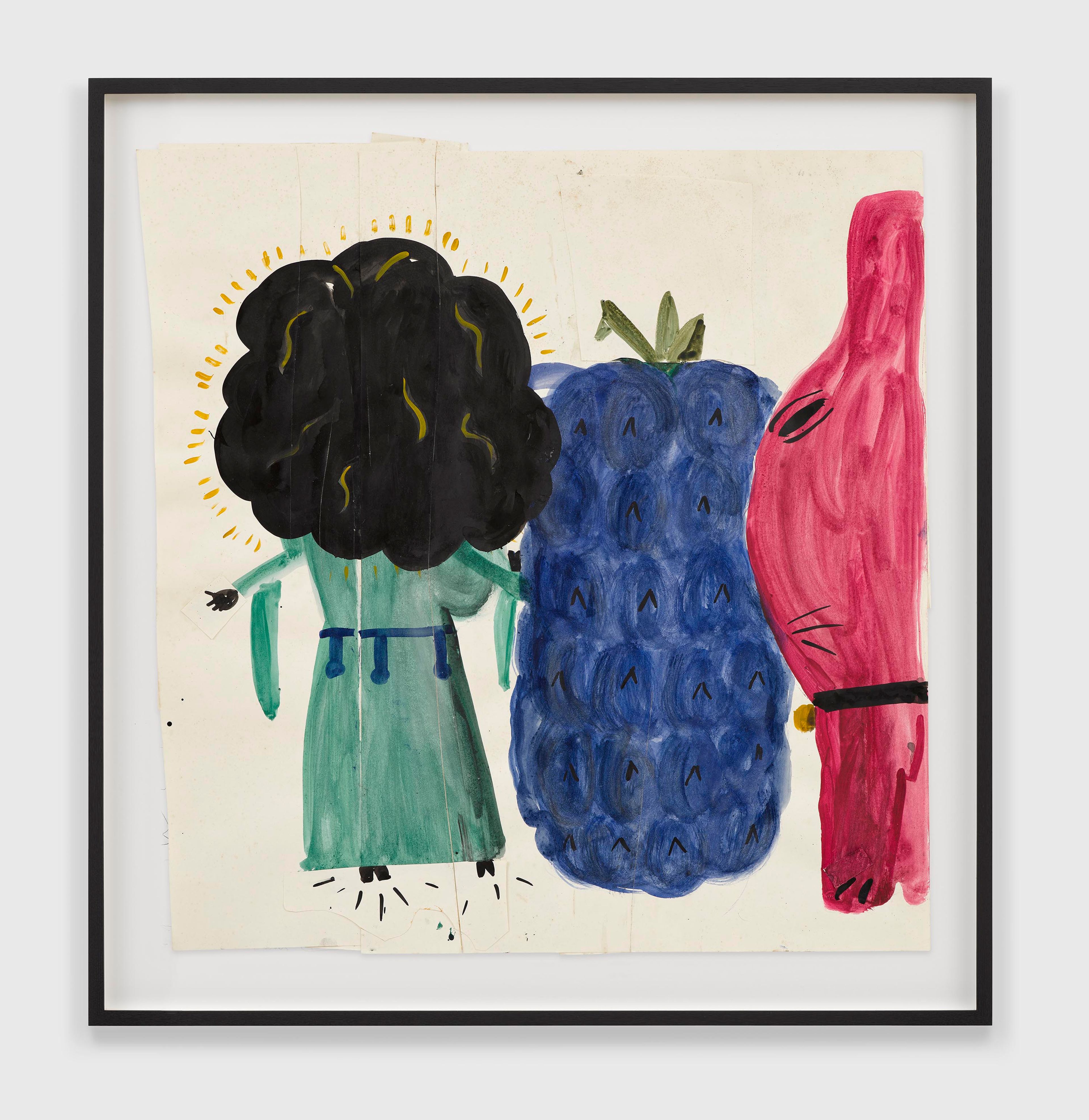Online Exhibition
Selected Works: Rose Wylie at Zentrum Paul Klee
Interested in artworks?
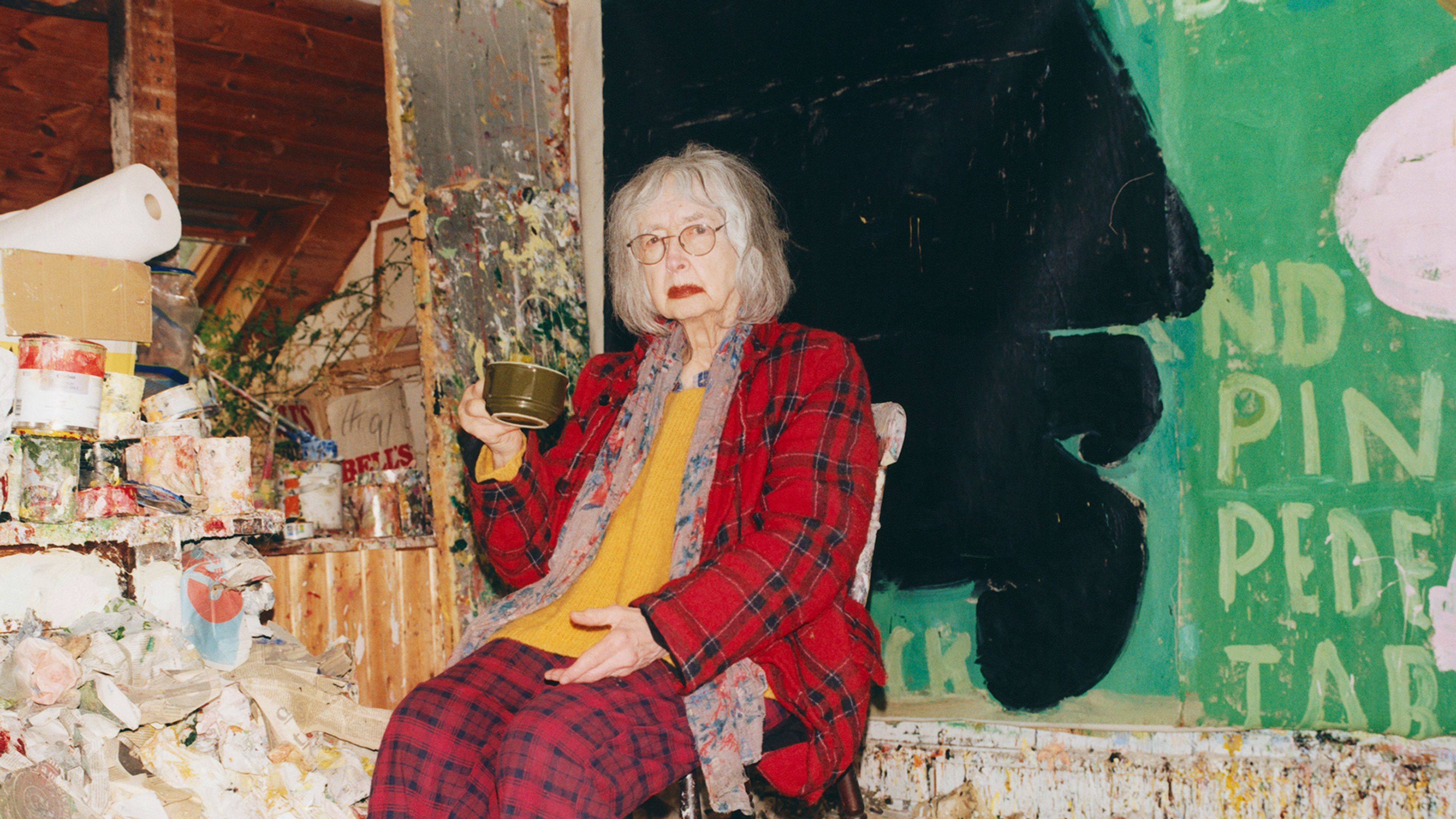
Rose Wylie in her studio, 2023 (detail). Photo by Will Grundy
“There is something in my painting ... it isn’t quite like other people’s.”
—Rose Wylie

Installation View, Rose Wylie. Flick and Float, Zentrum Paul Klee, Bern, 2025. Photo by Rolf Siegenthaler. © Zentrum Paul Klee
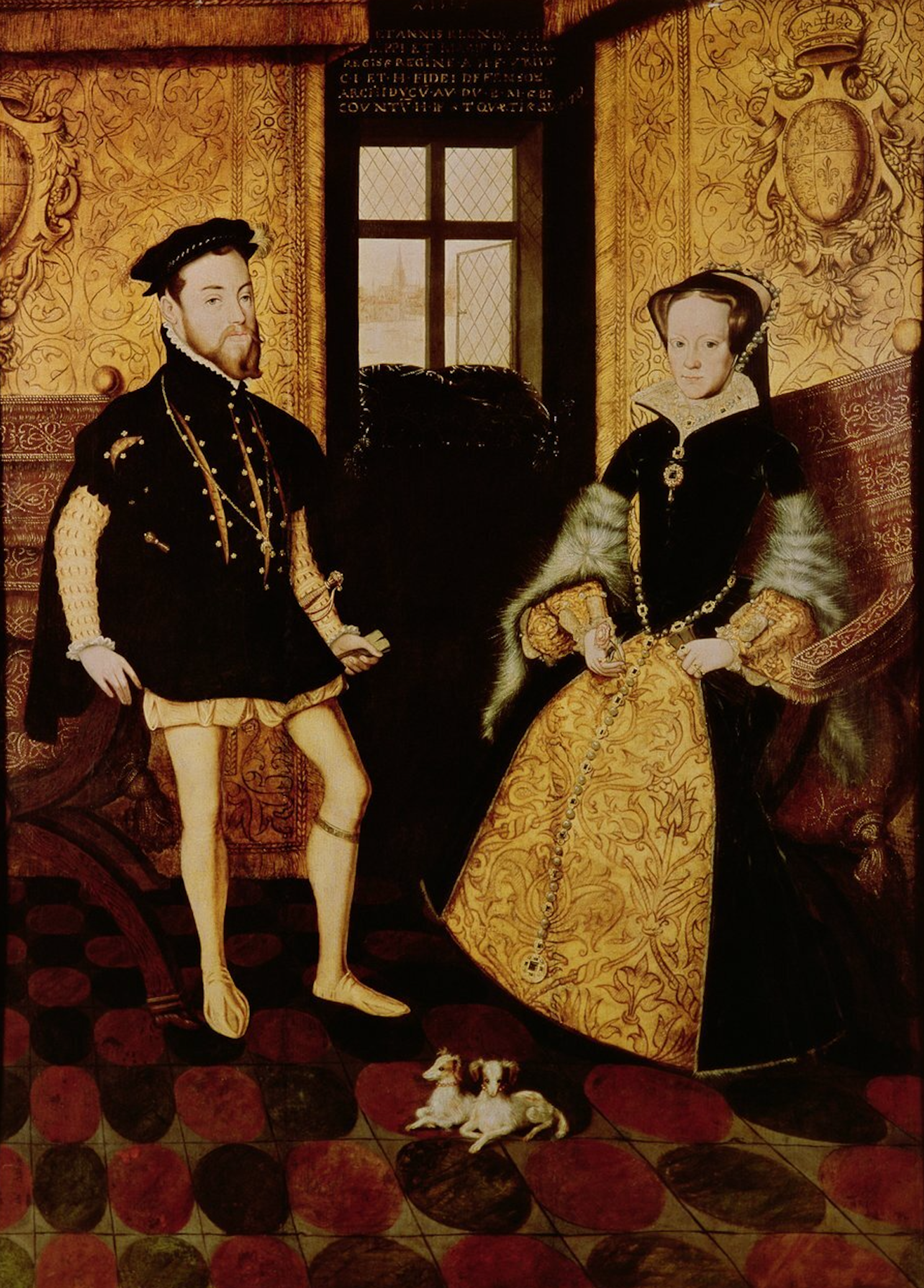
Hans Eworth Or Ewoutsz, Mary I Of England And Philip II Of Spain, 1558 (detail)
Here, the artist reorganizes compositional space in a kind of cubist mode, showing the same figure in two varied perspectives and distorting the architectural elements of the hall.
“I don't like perfection,” Wylie has explained of this tendency to splice images and spaces together. “I like breaks and joins and additions.… I like movement.” Pairing the two panels, Wylie includes architectural elements in both, and the two compositions map a kind of “escape route” that follows different hallways and rooms in Wylie’s home, across time and space.
Rose Wylie discusses Mary and Philip and Little Rose (Hall), 2025, in an excerpt from a film produced on the occasion of the exhibition: Rose Wylie: Flick and Float, Zentrum Paul Klee, Bern, 2025. Curator: Fabienne Eggelhöfer; Camera: Speedwagon Productions; Editing: Prospektivfilm. © Zentrum Paul Klee
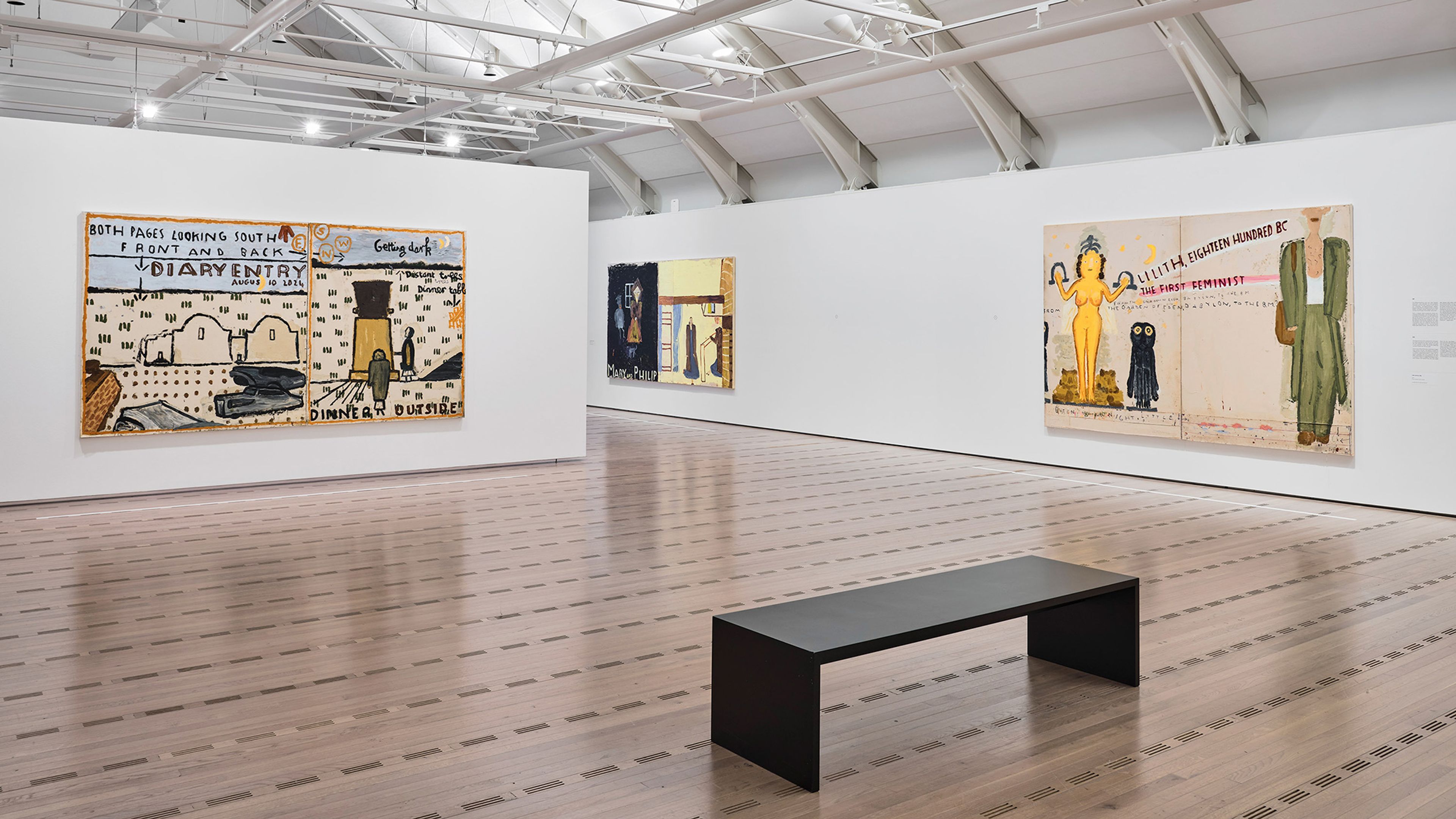
Installation View, Rose Wylie. Flick and Float, Zentrum Paul Klee, Bern, 2025. Photo by Rolf Siegenthaler. © Zentrum Paul Klee
“You’re painting something, a person, and the final thing needs to be part of that person ... and part of ... the time you’re in, the early origin, the process of painting, the subject, me, the object. They all have to be there, but part of the object has to remain.”
—Rose Wylie
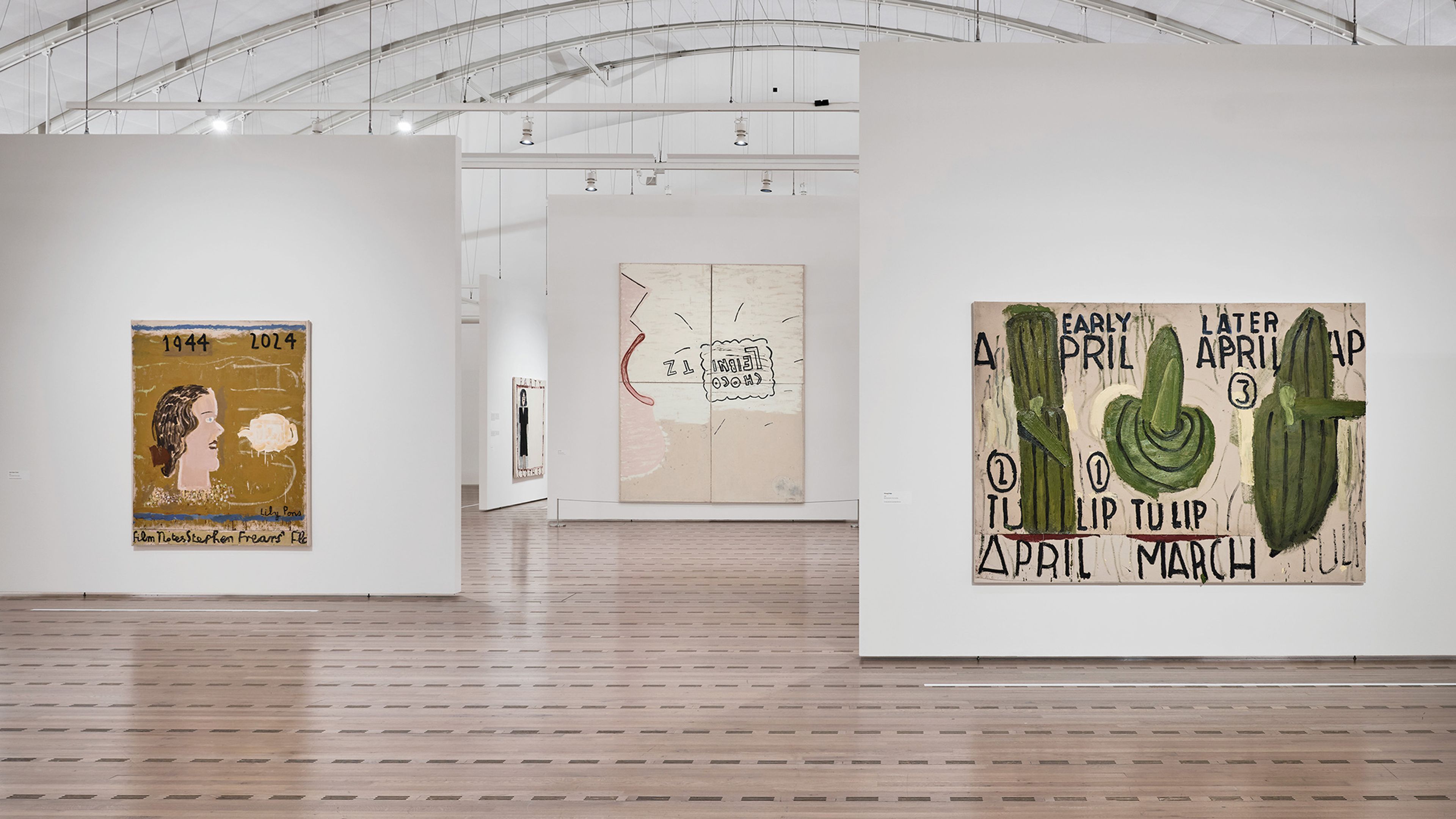
Installation View, Rose Wylie. Flick and Float, Zentrum Paul Klee, Bern, 2025. Photo by Rolf Siegenthaler. © Zentrum Paul Klee
Rose Wylie, Opera Singer & Teapot, 2024 (detail)

Installation View, Rose Wylie. Flick and Float, Zentrum Paul Klee, Bern, 2025. Photo by Rolf Siegenthaler. © Zentrum Paul Klee
“It’s not dabbling around with refinement. It’s raw. It’s very, very immediate.”
—Rose Wylie
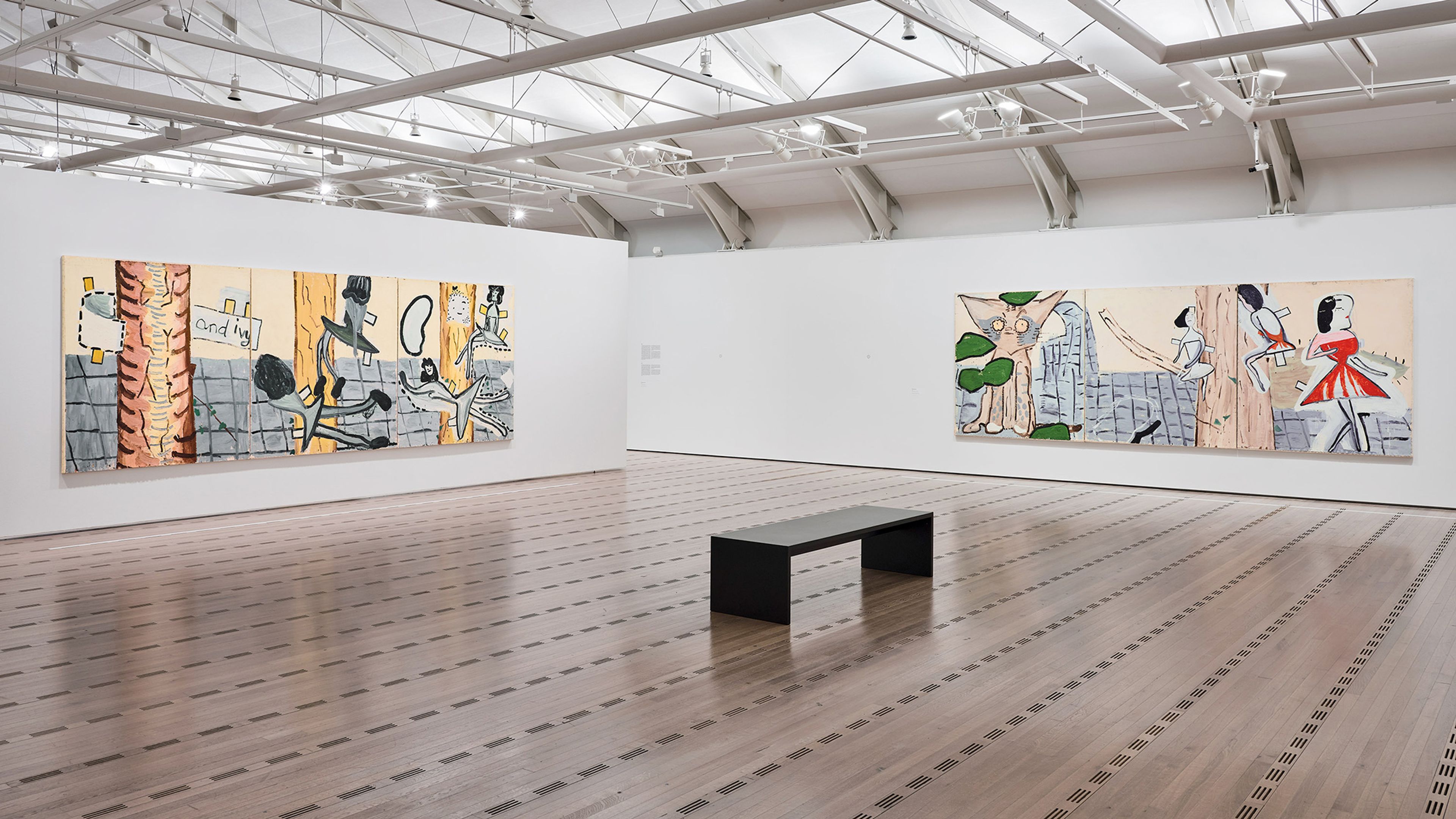
Installation View, Rose Wylie. Flick and Float, Zentrum Paul Klee, Bern, 2025. Photo by Rolf Siegenthaler. © Zentrum Paul Klee
“The image is arrived at through many drawings, evolving from a process of observation, personality, and response: keeping something of the original subject, but hoping for a transformation into a poetic and especial ‘particular,’ free from conventional representation.”
—Rose Wylie
Rose Wylie, Yellow Strip, 2006 (detail)
“Time, in Rose Wylie’s paintings, is unstable; it’s stacked up, moves sideways, swerves. Memories from last week or last century are evoked in bold images that rub up against diaristic lines of text or single words which float amid compositions as enigmatic as the moon.”
—Jennifer Higgie
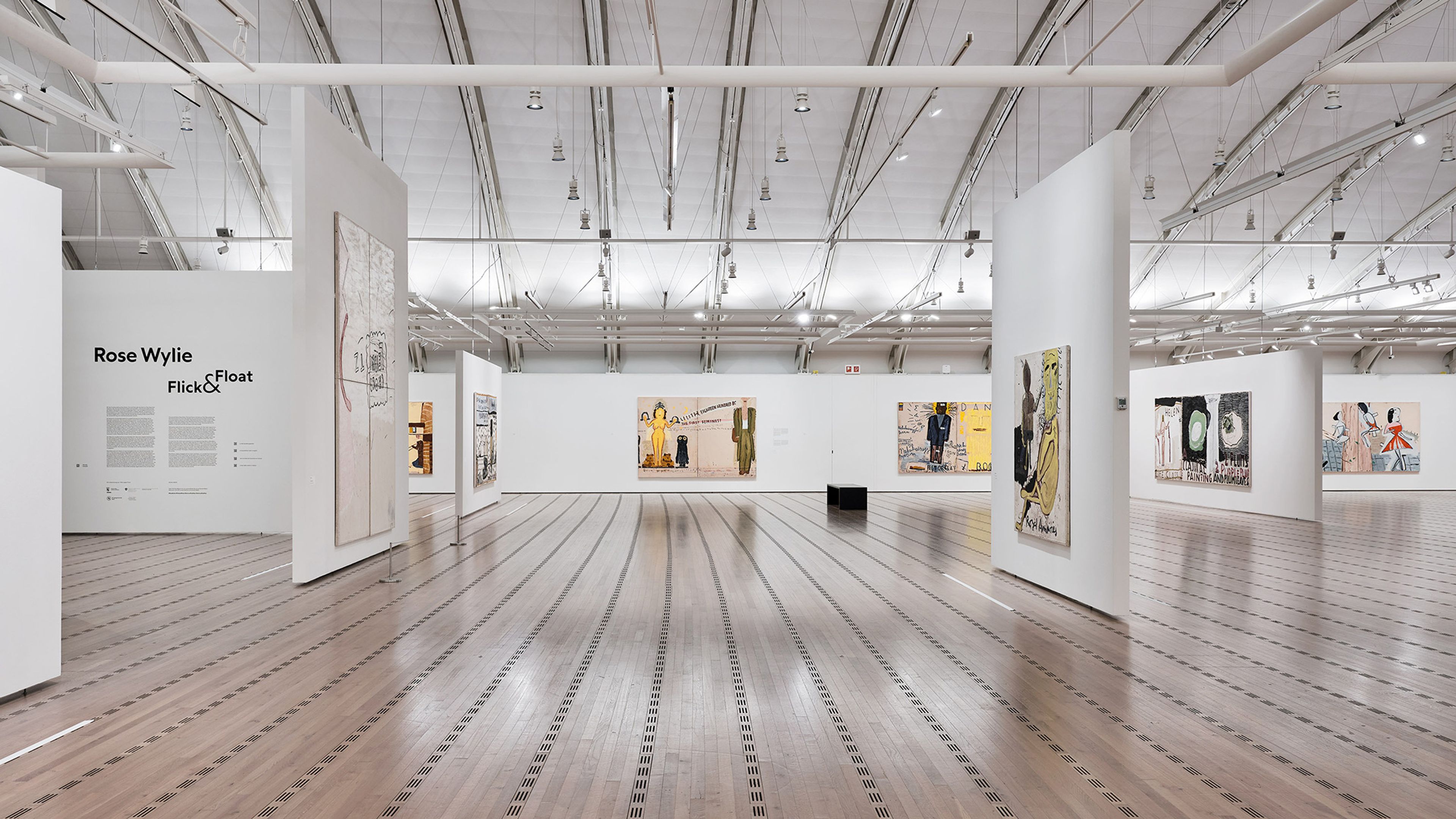
Installation View, Rose Wylie. Flick and Float, Zentrum Paul Klee, Bern, 2025. Photo by Rolf Siegenthaler. © Zentrum Paul Klee
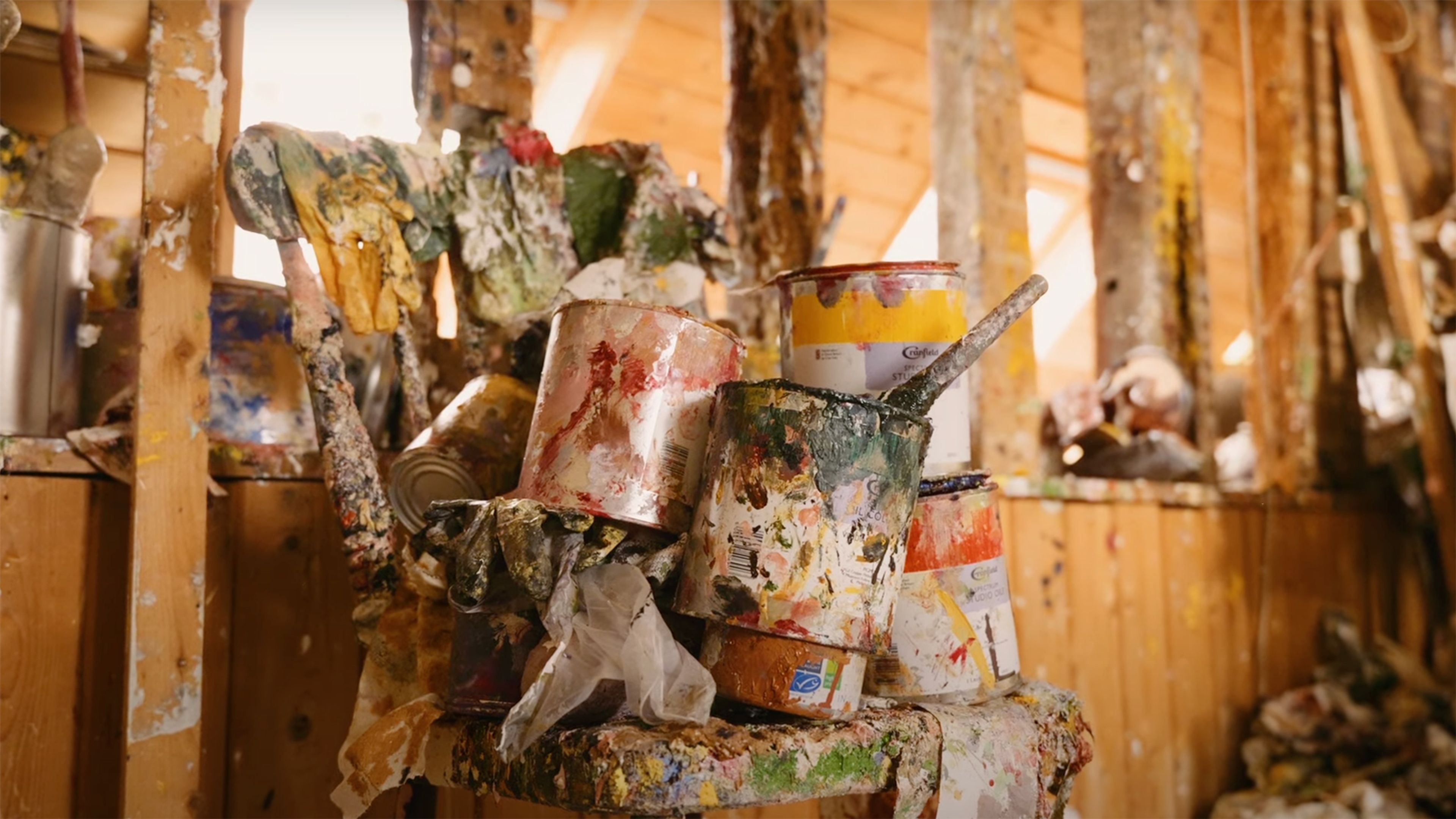
Rose Wylie’s studio, 2023

Inquire about works by Rose Wylie

